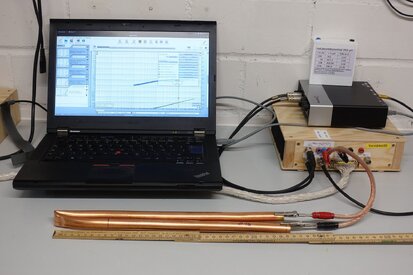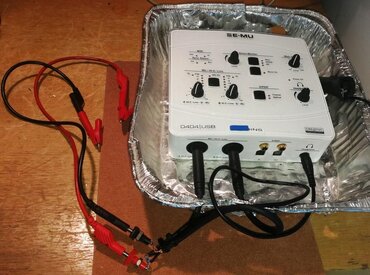Hello,
I'm conducting impedance measurements for several guitar speaker cabinets I have in my possession. The problem, in short, is that going through the calibration steps ruins my results.
Here is a no-calibration measurement of a Mesa/Boogie Traditional 4x12. It looks about right for the most part. Could we make it more accurate? Let's see.

Here are my calibration results--
Open Circuit

Short Circuit

Open and Short Circuit (just trying to be thorough)

Reference Resistor

And finally, the fully-calibrated measurement...

Well that doesn't look right at all... The No Cal measurement leads me to believe I am on the right track. I am messing something up somewhere during the Calibration process. Any ideas what that might be?
I'm conducting impedance measurements for several guitar speaker cabinets I have in my possession. The problem, in short, is that going through the calibration steps ruins my results.
- Speaker Cabinet is 8 Ohm
- Sense Resistor is 100 Ohm
- Reference Resistor is 10 Ohm
- Audio Interface is a Motu M4 (1M Ohm Input Impedance)
- I am using speaker cables for all connections (LiveWire Elites)
Here is a no-calibration measurement of a Mesa/Boogie Traditional 4x12. It looks about right for the most part. Could we make it more accurate? Let's see.
Here are my calibration results--
Open Circuit
Short Circuit
Open and Short Circuit (just trying to be thorough)
Reference Resistor
And finally, the fully-calibrated measurement...
Well that doesn't look right at all... The No Cal measurement leads me to believe I am on the right track. I am messing something up somewhere during the Calibration process. Any ideas what that might be?
















